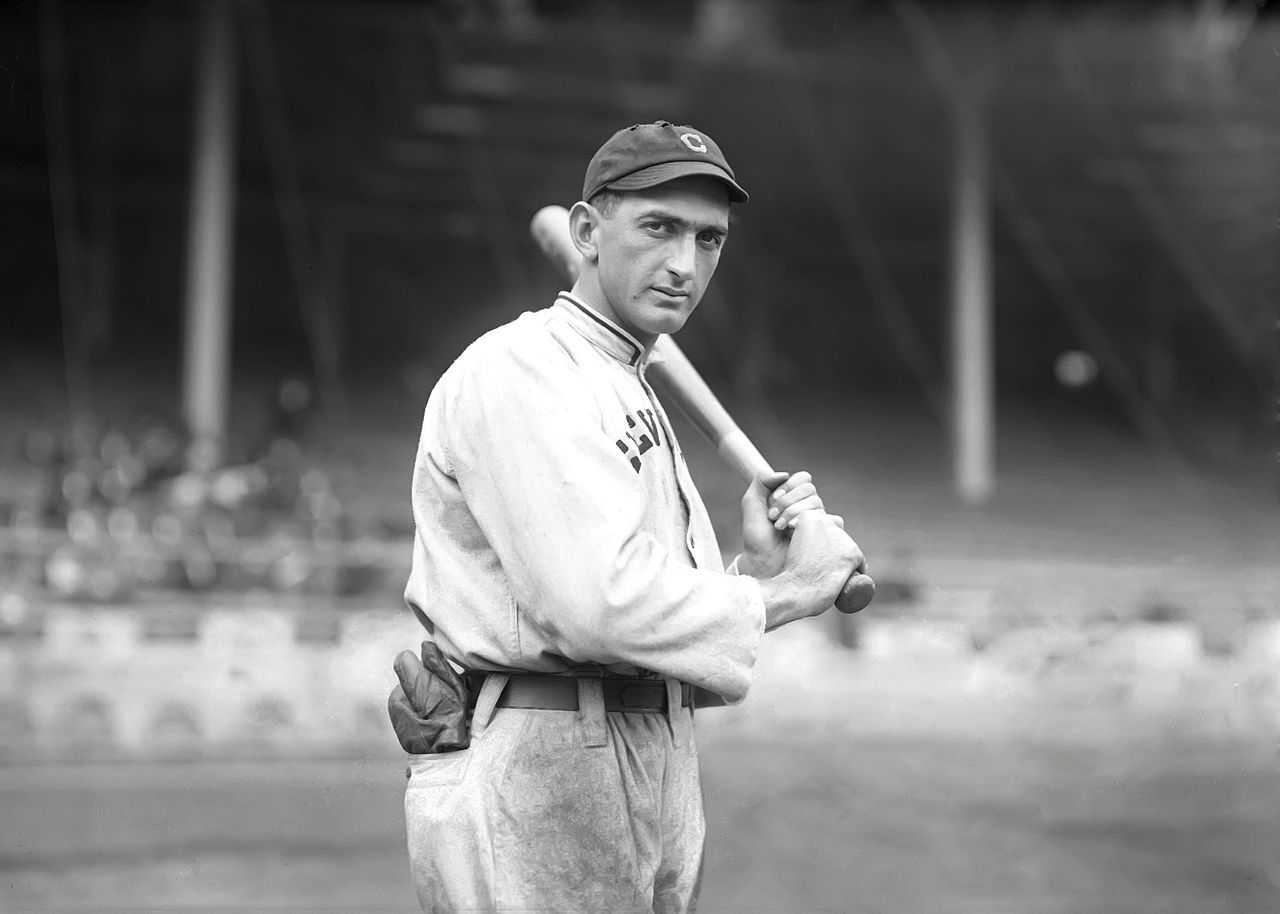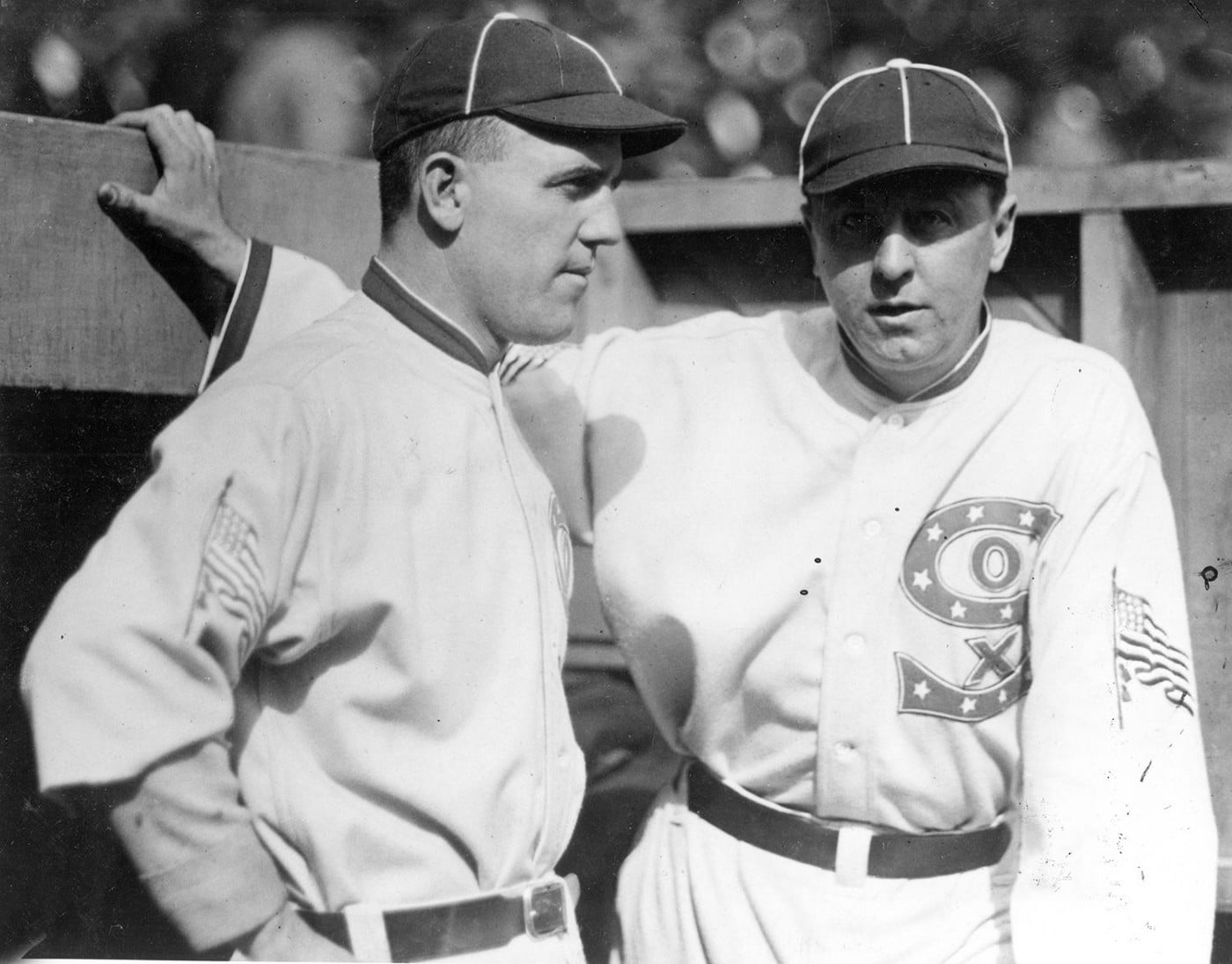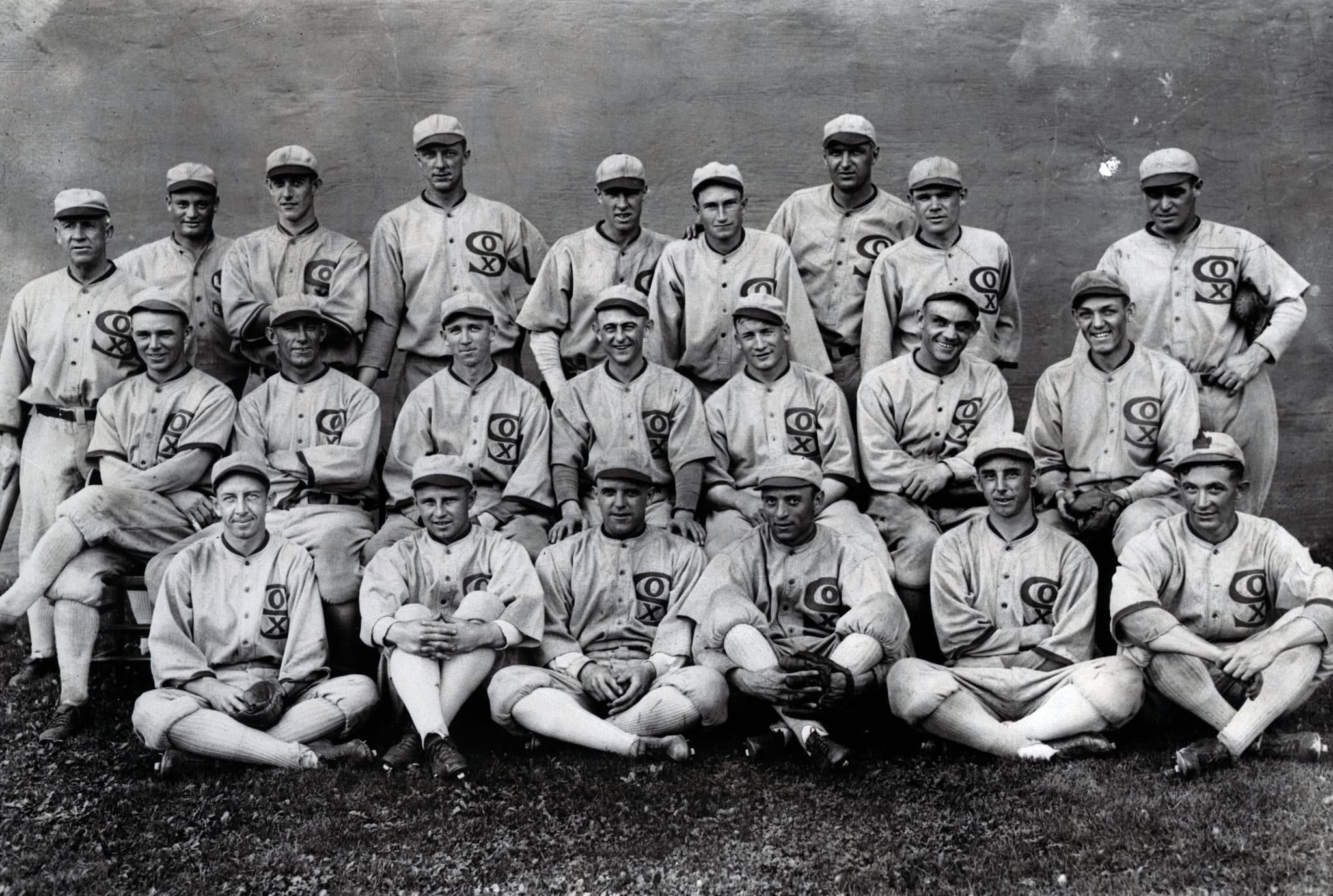
Jump to:
- #1. It Was A Nine Game Series
- #2. The Chicago White Sox Threw The Series
- #3. Shoeless Joe Jackson Batted .375 In The Series
- #4. Game 1 Made Many Suspicious
- #5. The White Sox Were The Better Team
- #6. This Was The 2nd Win In The World Series By The National League In the Decade.
- #7. The Reds Pitching Depth Favored Them With The Change In Format
#1. It Was A Nine Game Series
The 1919 World Series shared a similarity to the 1903 World Series in that it was a best-of-nine series (The Boston Americans won the 1903 series). This was done in an effort to generate more popularity and create more revenue at the gate.
The series would go a total of eight games and become the most controversial World Series in the history of baseball due to the Black Sox scandal.
The World Series would go back to a best-of-seven series by 1922.
#2. The Chicago White Sox Threw The Series
The Chicago White Sox were an unhappy club and were easy prey for gamblers trying to make a big score. This is despite having the third-highest payroll in the league. They were only behind Boston and New York.
A meeting of White Sox players, including those committed to going ahead and those just ready to listen-took place on September 21 in Chick Gandil's room at the Ansonia Hotel in New York City.
Buck Weaver was the only player to attend the meetings who did not receive money. Nevertheless, he was later banned along with the others for knowing about the fix but not reporting it.
Although he hardly played in the series, utility infielder Fred McMullin got word of the fix and threatened to report the others unless he was in on the payoff.
As a small coincidence, McMullin was a former teammate of William "Sleepy Bill" Burns, who had a minor role in the fix. Both had played for the Los Angeles Angels of the Pacific Coast League, and Burns had previously pitched for the White Sox in 1909 and 1910.
Star outfielder Shoeless Joe Jackson was mentioned as a participant but did not attend the meetings, and his involvement is disputed.
The scheme got an unexpected boost when the straitlaced Faber could not pitch due to a bout with the flu.
Years later, Schalk said that if Faber had been available, the fix would have likely never happened since Faber would have almost certainly started games that went instead to two of the alleged conspirators, pitchers Eddie Cicotte and Lefty Williams.
#3. Shoeless Joe Jackson Batted .375 In The Series

The best player on the field who was supposedly in on the fix batted .375 for the entire series, which would lead all batters. He also hit the only home run in the series and set a record for hits.
It is widely disputed that Shoeless Joe was ever in on the fix. However, he did take $5,000 for Game 4's loss, which made him look suspicious.
Many also argue that his offense was suspect as he played very well in the clean games and much worse in the thrown games. He batted .286 in the dirty games, which is still an above-average batting average in a World Series.
#4. Game 1 Made Many Suspicious

The first game of the 1919 World Series began at 3 p.m. at Cincinnati's Redland Field, with 30,511 fans in the stands and ticket scalpers outside the park raking in at least $50 per ticket.
Chicago failed to score in the top of the first. In the bottom of the inning, Cicotte (who was paid his $10,000 the night before the series began) took the mound and hit the leadoff hitter, Morrie Rath, in the back with his second pitch, a prearranged signal to Arnold Rothstein that the fix was on.
Even so, the game remained close for a while, due in part to some excellent defense from the conspirators, seeking to deflect suspicion from themselves.
In the fourth, however, Cicotte "went haywire" (again according to Meany, op. cit.), allowing a number of hits in succession, climaxed by a two-out triple to the opposing pitcher, as the Reds scored five times to break a 1–1 tie.
Cicotte was relieved at that point, but the damage was done, and the Reds went on to add three more runs in later innings and win 9–1.
Sportswriters thought that a bad throw by Cicotte to Risberg in the fourth inning, which prevented a possible double play, was suspicious.
#5. The White Sox Were The Better Team

The Cincinnati Reds were overmatched, and if not for the team throwing the games, they would have possibly been swept or lost in 6 games.
When the White Sox played clean or became angry with the gamblers, they won. They won two games in a row to bring the series to 4-3. There was little doubt that if the White Sox decided not to throw the series, they could easily rip off another 2 wins in a row against the Reds.
This ended when Lefty Williams was visited by a shady character who threatened he and his wife if he did not throw Game 8 in the 1919 World Series.
He would.
#6. This Was The 2nd Win In The World Series By The National League In the Decade.
The 1910s were dominated by the Philadelphia Athletics and the Boston Red Sox. The only National League team to win during this stretch was the Boston Braves, who upset the Athletics in the 1914 World Series.
However, the remainder of the decade was dominated by the American League.
The Chicago White Sox had won the 1917 World Series two years prior to the scandal.
The Reds would come away with a win, but the 1919 World Series was obviously tainted.
#7. The Reds Pitching Depth Favored Them With The Change In Format

The Reds' pitching was universally solid.
The team's big three included Hod Eller (20–9, 2.39), Dutch Ruether (19–6, 1.82), and Slim Sallee (21–7, 2.06), all among the league leaders in various categories.
They were backed by three other pitchers who were almost as successful: Jimmy Ring at only 10–9 but 2.26, Ray Fisher at 14–5 and 2.17 with five shutouts, and Cuban Dolf Luque at 10–3 and 2.63, former and future Giant who would win the last game of the 1933 World Series in long relief for New York.
It was a deep and talented staff, a definite advantage in a Series whose format had just been changed from best of seven to best of nine.
